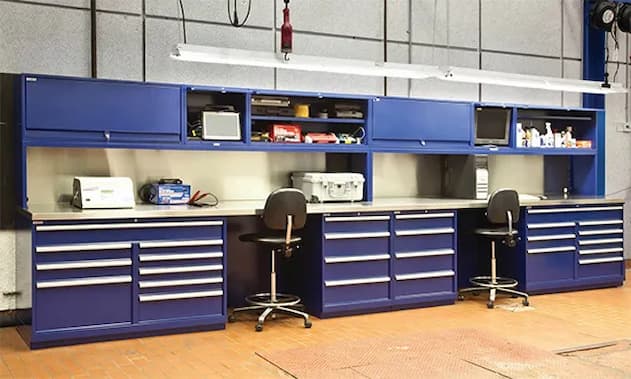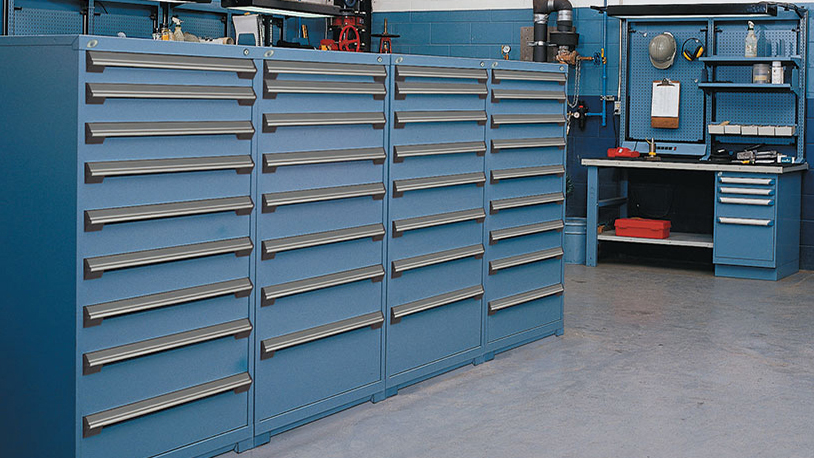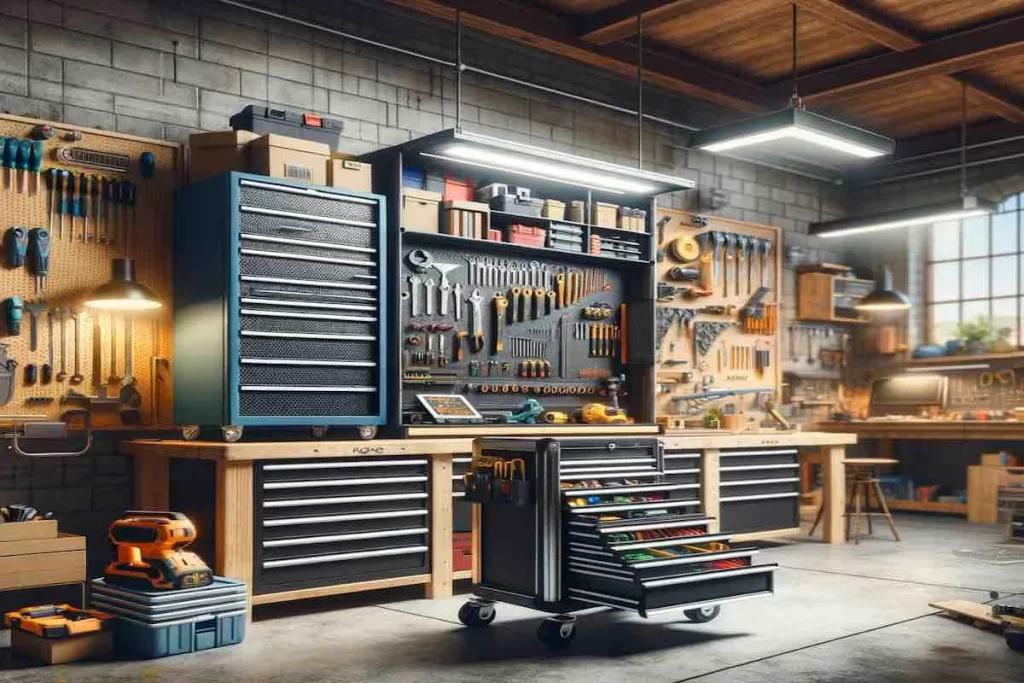Choosing the Right Tooling Cabinet for Your Workshop: A Comprehensive Guide
For craftsmen, mechanics, trading professionals and even DIY enthusiasts, organisation is key. A well-organised workshop enhances productivity, ensures that tools are easily accessible, and maintains a safe working environment. That’s why it’s important to have tools that will help you with organisation, and one of those tools is the versatile industrial tooling cabinets.
What Are Tooling Cabinets?

They are specialised storage units that are designed to keep tools and equipment in a more organised way. They come in various sizes, materials and configurations to suit different workshop requirements. Unlike regular cabinets, they are built to withstand the weight and wear associated with heavy tools and frequent use. They often feature compartments and drawers to accommodate tools of various shapes and sizes, ensuring each tool has its own designated place, and with this, they enhance efficiency and even safety in the environment.
Features
When you’re looking for industrial tooling cabinets, you need to choose the ones that are suitable for you and your work environment. You need to look for features that make sure the cabinets are durable, functional and they meet your needs, so here are some factors you need to take into consideration before you buy these cabinets.
Material
The material is a crucial feature because it directly affects the durability and weight limit of the cabinet. Steel, aluminium and plastic are the most common materials used. Among these materials, the steel ones are known for their strength and durability, capable of supporting heavy loads and withstanding the rigours of constant use. The aluminium ones are resistant to rust and corrosion however, they might not be as strong as the steel cabinets. When it comes to plastic cabinets, they are lightweight and most suitable for lighter tools and won’t be able to withstand heavy loads. So, depending on the work you do and your tools, pick the right material for your cabinets.
Construction
The construction of the tooling cabinets affects not only its longevity but also its functionality. Cabinets with reinforced corners and sturdy and robust drawer slides offer superior durability. High-quality construction ensures the cabinet can handle frequent use without compromising its structural integrity. Drawers should open and close smoothly even when fully loaded, so pay close attention to these details when evaluating potential ones to ensure you’re investing in a product that will stand the test of time.
Mobility
Another crucial factor to consider is mobility, especially in dynamic workshops where tools need to be frequently moved. Tooling cabinets can be either stationary or mobile. Stationary ones are designed to stay in one place, usually offering more storage and are larger, so they are gravy to move around without machines. They are great for workshops where tools are used at fixed stations. Mobile cabinets, on the other hand, are equipped with wheels or casters and allow you to move them around the space with ease. This feature is quite useful in larger workshops or when working on a project that requires tools to be moved to different locations.
Locking Mechanisms
Security is also an important consideration, especially when working in a big environment where many people pass through and you have expensive equipment. Tooling cabinets often store valuable tools and equipment, so having reliable locking mechanisms is essential. There are various types of locking systems, so choose the one that offers convenience and is easy to use.
Consider Your Needs

After considering the factors you also need to take your needs into account. Assess the types and sizes of your tools as well as the size of your workspace. Take into consideration the weight of the tools also, because different cabinets can support different weights. Estimate the number of tools you have, a larger collection is going to require more storage space, possibly even requiring more than one cabinet, but first measure the available space in the workshop to ensure that the chosen cabinet will fit comfortably without obstructing workflow or access to other areas. If your workshop is bigger, consider getting the mobile cabinets, so that you don’t have to walk back and forth each time you need a tool or so that you don’t have to carry them manually and hurt yourself.
Make the Most of It

Once you’ve chosen the right one for you, maximising its potential is key to achieving optimal organisation. You can label the drawers and compartments clearly to make it easy to locate tools quickly. Make sure to use durable labels, so that they don’t get damaged quickly. Organise tools in a logical way, the most used ones can be stored in the most easily accessed compartments while the less used ones you can put in the lower or higher drawers. Don’t forget to regularly clean and maintain them to keep them in good condition and avoid unwanted situations.
Choosing the right tooling cabinet is a crucial step in creating an efficient and organised work environment. By considering factors such as material and construction, and understanding your needs, you can choose ones that are suitable for you, your job and your workshop.



